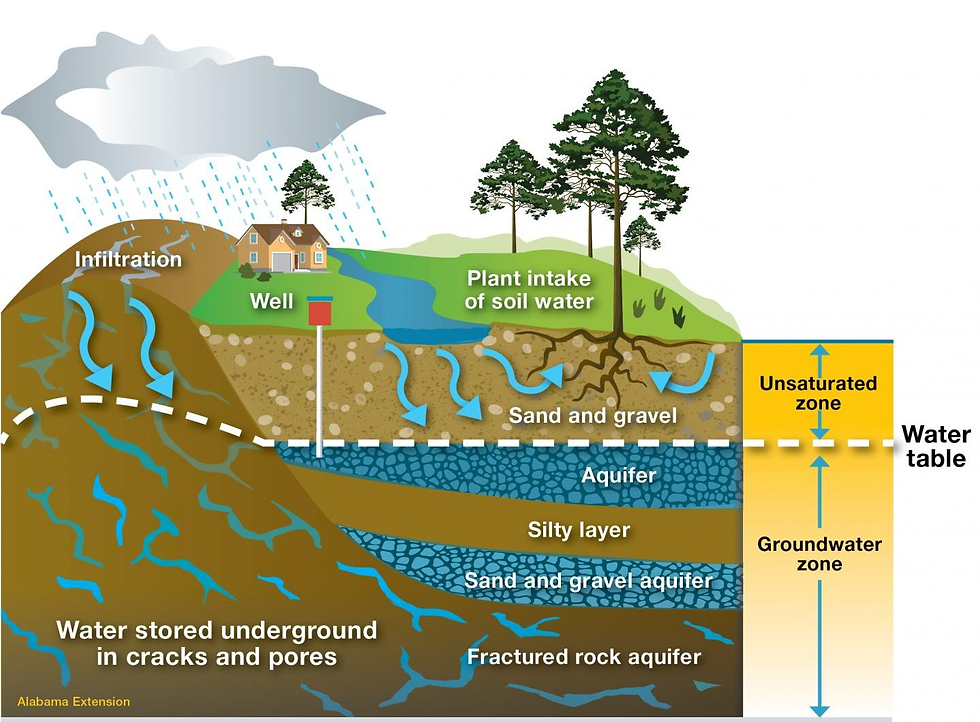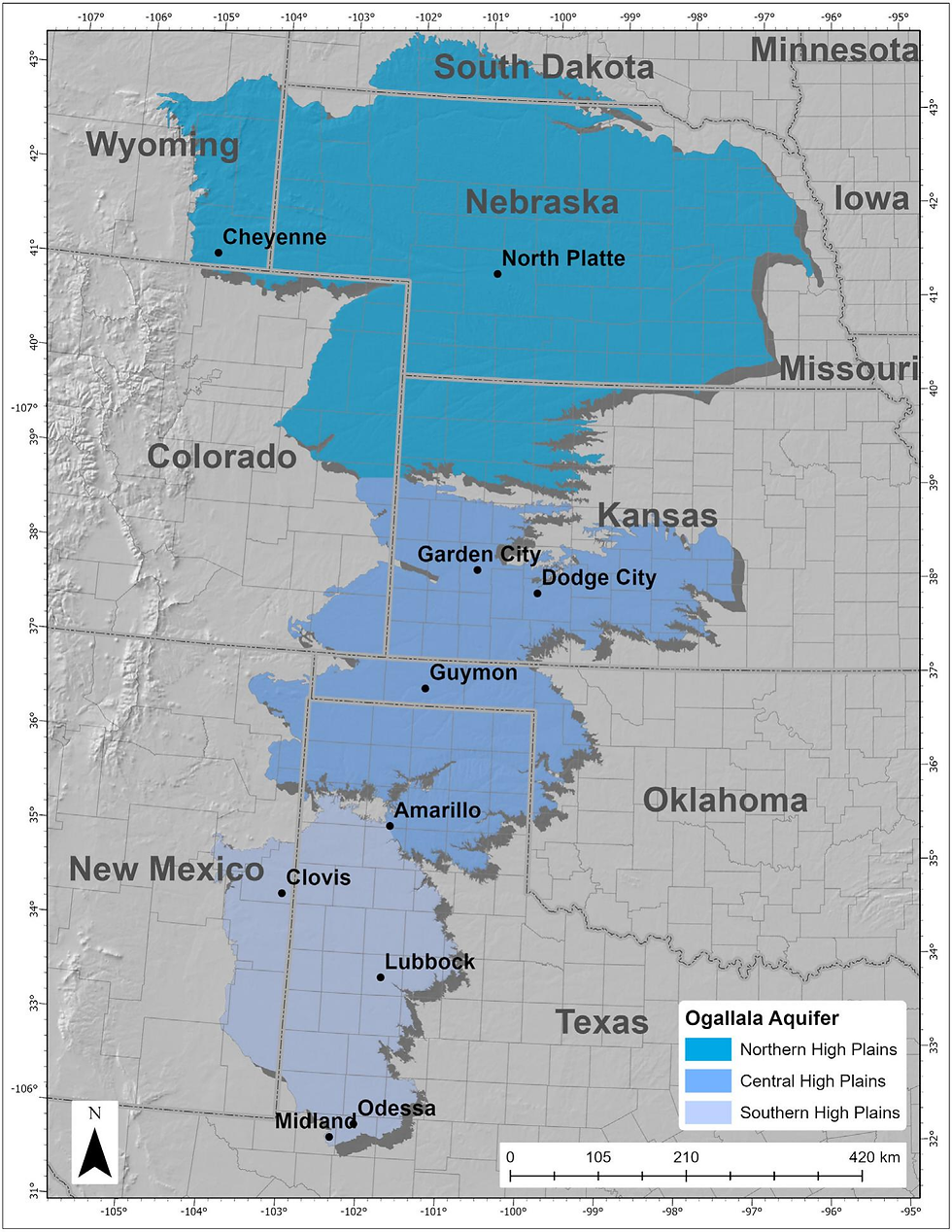Ogallala Aquifer: Water Underneath Nebraska
- Eli Mirek

- Sep 10, 2025
- 3 min read
Hello amazing people! Some of you may have read the blog I wrote last semester about crop circles and how they saved agriculture in the Midwest after the Dust Bowl. In that blog, I mentioned the Ogallala Aquifer, an underground water reservoir that European settlers pumped water out of to grow crops. Today, I will be expanding on what the Ogallala Aquifer is, where it is, and why it is so important.
First, let's explore what an aquifer is. According to National Geographic's definition, an aquifer is a "body of porous rock or sediment saturated with groundwater." Essentially, an aquifer could be described as a pocket of water far below the ground. Precipitation seeps down through layers of soil and rock which allows the water to be naturally filtered. Artificially, aquifers are accessed through wells, but are naturally discharged through wetlands, springs, and other bodies of water. Aquifers are very important because most of "the water we use for domestic, industrial, [and] agricultural purposes is groundwater." For example, most of our drinking water comes from aquifers.

The Ogallala Aquifer is the largest aquifer in the United States, and, in fact, one of the largest in the world. It covers the entire state of Nebraska, roughly thirty percent of Kansas, the Oklahoma panhandle, northwestern Texas, and parts of South Dakota, Wyoming, Colorado, and New Mexico. In total, the Ogallala Aquifer covers around 174,000 miles.
As stated above, aquifers are important for supplying a region's drinking water. In a report from the U.S. Geology Survey (USGS) on their National Water-Quality Assessment, it states that the Ogallala Aquifer supplies over 418 million gallons of water PER DAY for domestic drinking water. Over 2 million civilians depend on the Aquifer for day-to-day hydration. While drinking water is one reason the Aquifer is important, 94% of water use is used for agriculture, specifically irrigation. Most of the crops grown in the region depend heavily on the groundwater supply. The livestock business is also supported by the Aquifer through the supply of drinking water and irrigation of "forage crops" (grass, clover, legumes, etc.)

While the Ogallala Aquifer is important for economic and domestic purposes, it also creates ecosystems that are key to the biodiversity of the region. Bodies of water and wetland ecosystems are sustained by and connected to the Aquifer. These spaces and ecosystems are home to many different native species, both plant and animal. Without the Aquifer, these species would most likely go extinct due to loss of habitat, and the biodiversity of the region would be at risk.
Unfortunately, the depletion of the Aquifer is already causing concerns. Water is being pumped out much faster than it is being replenished. Precipitation must be filtered through layers and layers of soil and sediment, so, obviously, it takes a long time for water to be "recharged" into the Aquifer. Water loss is already visible in some parts of the region; wells are starting to run dry, and the water levels of rivers and streams are decreasing. If this continues, it is likely to take a hard hit on agriculture, food & water supply, and wetland ecosystems. Thankfully, policies have been passed to limit how much water can be pumped in certain states and some farmers have switched agricultural methods in order to reduce pumping water from the Aquifer.
Not to end on a depressing note, but a lot more work has to be done to successfully conserve and protect the Aquifer... State governments have only recently began passing laws limiting water pumping for irrigation, and water levels are decreasing severely, especially in the Aquifer's southern region.
Research from "What Is the Ogallala Aquifer and Why Is It Important?" by Biology Insights and the USGS NAWQA High Plains Regional Ground-Water Study.
Cover photo taken by E.J. Peiker.
_edited.png)

Comments